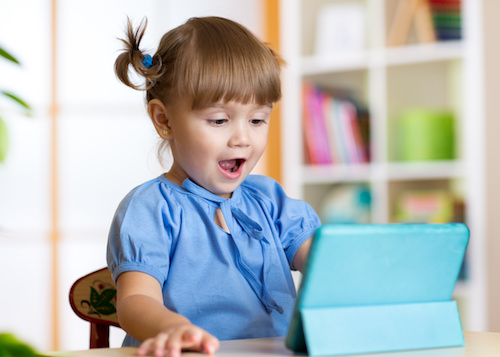Picture books are the first touchstone for children’s reading—or were, before the shining allure of digital media began to capture developing eyes and minds. Children have the advantage of a fresh mental slate in modern media, where the conventions of touch screens and interactions are base skills. Watching any child navigate an iPad, Kindle, Nook, or gaming console will provide a view of the rapidly expanding world of interaction and sophistication future generations will master and use for the foundation of their own developments. Why, then, does the print market for children’s publishing continue with gusto in the digital age?
Digital reading has yet to deliver the apocalyptic end of print media as we know it, but instead occupies a new middle ground, since no single product or design has yet to dethrone the tactile joy or nostalgic scent of pulp, ink, and glue. Children’s publishing is not immune to the (supposedly) impending shift to an all-digital future, but the operativity of picture books and shared learning through storytime is an undeniable building block for literacy with far more moving parts than the shift from print to digital. When children and adults gather for an interactive reading of a picture book, the opportunity for co-constructive storytime opens the experience of critical thought, learning validation, and conceptual understanding to the early readers gathered in the circle. According to Reading Picture Books to Children by Megan Dowd Lambert, this is an opportunity for both parties to engage in “extended, cognitively challenging conversation during the reading of a book.” It’s a free-flowing narrative experience that makes space for children to develop ideas about the structure and reasoning behind the narrative and art of books. Numerous digital alternatives and creative solutions to make print storytime obsolete exist, and so far display an incredible breadth of opportunities for reading within the unexplored nebulas of digital design potential. A child can touch an image and see the spelling for a tree or cow, or zoom in to see the inner workings of an anthill, but can they “pat the bunny”? Not yet.
“Children are still going to have a bookshelf,” says Susan Katz, president and publisher of HarperCollins Children’s Books, in an article in Publisher’s Weekly. HarperCollins is far from ignoring the elephant in the room, however. As Katz admits, “They’ll have shelves with many other things, too.”
The functional truth lies within the supremacy of an open experience with engaging discussion for kids to make their own connections with authoritative guidance; however glitzy and immersive digital reading experiences like Mrs. Spider’s Tea Party are, the ability for children to gather and learn together has yet to operate as easily and effectively as with the punched-out trim of The Hungry Hungry Caterpillar with the support and questions of a leading reader providing access to further learning. Digital readers expand in many directions and serve as cutting-edge learning resources when experienced solo or in one-on-one sessions, but have yet to deliver anything close to co-constructive storytime.

